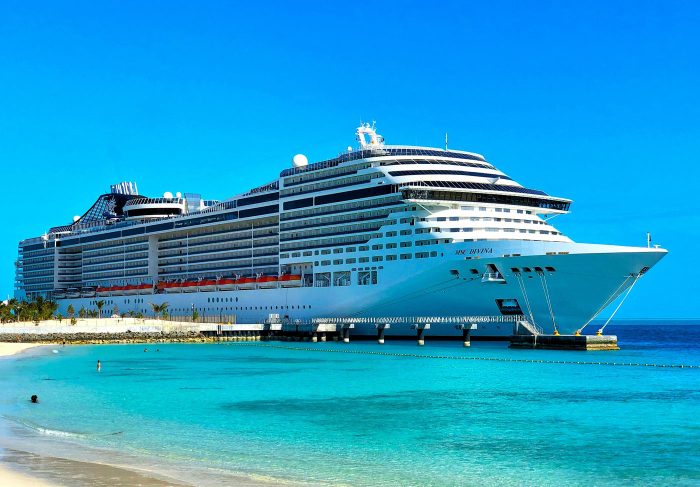If you’ve ever worked on board a Superyacht, you’ve probably heard of the Seafarers’ Earnings Deduction.
The Seafarers’ Earnings Deducation, or SED as it is commonly known, is a piece of legislation that helps people who work at sea significantly reduce their tax bill. In fact, it allows seafarers to claim up to 100% tax exemption on their earnings!
With so many savings to be had, it’s a really important legislation that can make all the difference to your tax bill when completing your seafarers’ self-assessment tax return. However, with complex criteria and strict rules and regulations to follow, applying for SED can be stressful.
One of the things we are most frequently asked about here at Flying Fish is about the “half-day rule” and what it means for SED claims. So, we’ve explained everything you need to know about this tricky piece of tax legislation below. Read on to find out more!
SED and the “half-day rule”: what you need to know
Who is eligible for SED?
As we said above, the Seafarers Earnings Deduction or SED is a tax legislation that allows 100% of foreign earnings to be exempt from income tax. However, to be eligible for SED, you must meet the following criteria:
- You must have worked outside of the UK for the qualifying period of 365 days
- In each qualifying period there must be at least one voyage that begins and ends at a foreign port
- You work on a ship or another suitable vessel
When are you no longer eligible?
You will no longer be able to claim SED if you:
- Are not employed on a suitable vessel
- Have not been away from the UK for long enough
- Break the “half-day” rule or spend more than 183 days in the UK
What is the qualifying period?
HMRC uses the term “eligible or qualifying period” to refer to 365 days or more – so you can’t make your first claim until 365 has passed from when you first left the UK. Additionally, when you apply for SED, the claim period must span a complete calendar year.
So, it starts with the date you leave, ends with an arrival date, and the period in-between must be 365 days in order for you to have a valid claim period. Oh, and the eligible period must mainly be made up of days when you are absent from the UK.
What do you mean by “absent from the UK?”
For tax purposes, HMRC considers you to be absent from the UK on a particular day if you are outside the UK at midnight at the end of that day. Non-workdays such as holiday, can also be counted as absence.
Can I come home in between charters?
Yes, a return visit to the UK can count towards your eligible period if:
- No single visit lasts for more than 183 consecutive days
- The total number of days you’ve spent in the UK “isn’t more than one half of the total number of days from your first day abroad to the last day of the period you spent abroad after the return visit” – which is also known as the “half-day rule”
What is the “half-day rule”?
This is where it gets a bit complicated! Basically, the “half-day rule” is a component used by HMRC to assess your eligibility for SED. It is calculated from your last trip to the UK by taking the first date you were abroad to the last date you were abroad.
This time period abroad basically needs to be longer than half of the time you spent in the UK on your last visit – but it’s really important to get it right because if the “half-day rule” is broken at any point, your eligible period will stop and must be restarted.
An example of the “half-day rule” in action
We know it sounds super confusing, but bear with us! When you break it down, it’s not too bad (promise!).
- Sarah joins her Superyacht in a Stewardess role in a foreign port on the 1st of May, before going on leave when the ship arrives back in the UK on the morning of the 31st of May. This counts as Sarah’s first period abroad, which was a total of 30 qualifying days outside of the UK.
- From the 31st of May to the 30th of June, Sarah is on leave and stays within the UK. This totals 31 days in the UK.
- On the 30th of June, Sarah joins another Superyacht in a foreign port. The Superyacht is engaged on foreign voyages, and she remains onboard until the yacht pays off in a foreign port on the 30th of September. This results in another 61 qualifying days outside of the UK.
Therefore, the total number of days from Sarah’s first day abroad on the 1st of May until his last day abroad after his return visit on the 30th of September was 152 days. Half of 152 is 76 days. Sarah’s return visit only lasted for 31 days, which is less than 76 days. Therefore, Sarah didn’t break the “half-day rule” and the entire 152 days will count as an eligible period.
Ok, so what records do I need to keep?
To complete your self-assessment tax return and to calculate and claim your Seafarers’ Earnings Deduction, you’ll need the following documents:
- A filled out working sheet HS205 form
- Air tickets or travel vouchers
- Copies of hotel bills or receipts
- Your passport and visas
- The freeboard logs for your ship(s)
- Your seafarer’s discharge book
I don’t meet the SED criteria. Do I still need to complete a tax return?
Unfortunately, yes. Anyone who has undeclared earnings from working at sea is legally required to submit a return to HMRC, even if they are not exempt from paying tax. HMRC will then request any payment which is due.
Need further advice on your tax?
For even the most experienced Yachties, there’s no denying the fact that HMRC don’t make it easy for you to complete your self-assessment tax return and claim Seafarers’ Earnings Deduction. However, even though you will most likely end up not paying any income tax, it’s essential that you do complete your tax return on time, because not doing so could result in some hefty penalties further down the line.
If you’re struggling with your seafarers’ tax, though, don’t worry – help is at hand! In fact, at Flying Fish we run a specialist tax service to help UK crew. For just £210 a year we will complete your tax return, ensure it is done correctly, and make sure it is submitted on time so that your SED claim can be a smooth sailing as possible.
You can find out more about our seafarers’ tax service here, or alternatively learn more about SED in our Ultimate Guide to Seafarers’ Earnings Deduction.






